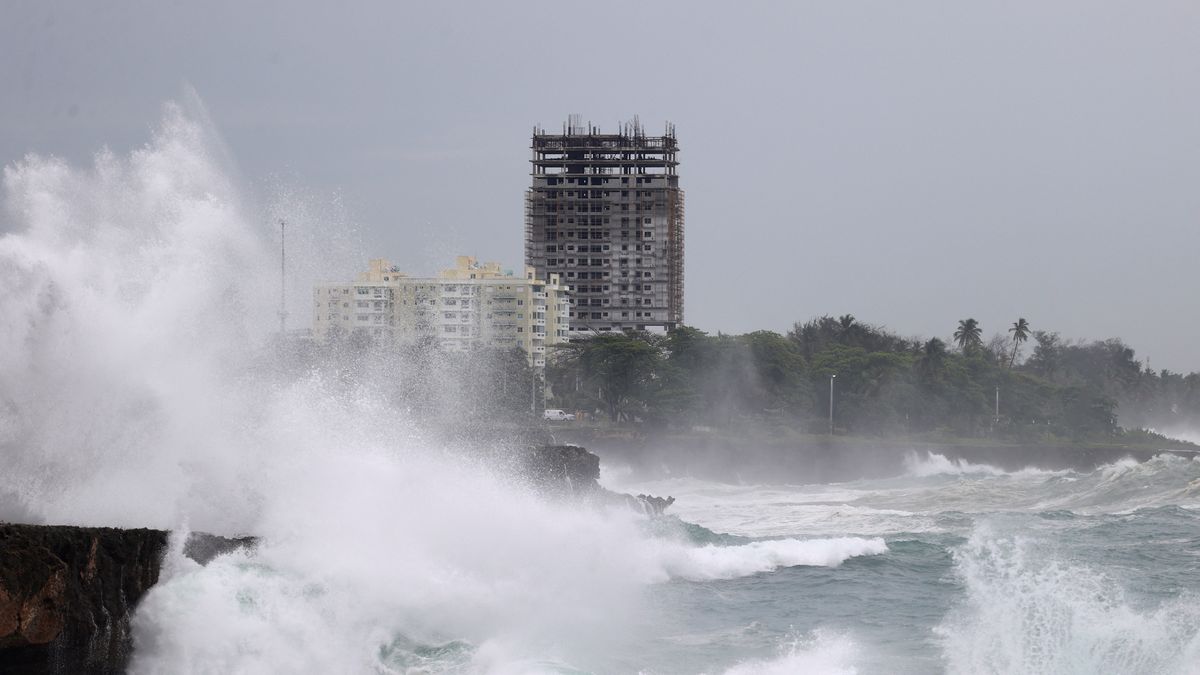He Category 5 Hurricane Berylthe first recorded in the Atlantic cyclone season and history, hits the islands of the Antilles with maximum force, leaving at least five dead and widespread destruction in the Caribbean Sea.
According to reports from authorities in the region, the phenomenon left at least Three dead in Grenada, one in Saint Vincent and the Grenadines and one on the coast of Venezuela. He National Hurricane Center The US National Hurricane Center (NHC), which on Monday had considered the effects of the storm “potentially catastrophic”, said in its first bulletin that the winds unleashed by Beryl intensified to almost 270 km/h.
Although in its second report the Miami-based entity indicated that it expected it to “weaken” upon arriving off the coast of Mexico on Wednesday, Jamaicaconsidered that in its development will hit that island like an “almost major” storm with life-threatening winds, storm surge, rainfall and flash flooding.
Hurricane Beryl damage.JPG
According to the NHC, Beryl is “the earliest Category 5 Atlantic hurricane on record.”
Reuters
UN alerts on climate crisis
“The eye of Beryl will continue to move rapidly across the southeastern and central Caribbean Sea today (Tuesday) and is expected to pass near Jamaica on Wednesday and the Cayman Islands on Thursday,” it said. According to the NHC, Beryl is “the earliest Category 5 hurricane on record in the Atlantic”.
After losing some intensity over the weekend, Beryl strengthened again on Monday, reaching the highest category on the Saffir-Simpson scale when it reached the island of Carriacou, in Grenada, with a population of 9,000. “In half an hour, Carriacou was devastated”he sentenced Prime Minister of Grenada, Dickon Mitchell“We have had virtually no communication with Carriacou for 12 hours,” he said.
Under state of emergency, Carriacou had telecommunications cut off and electricity, with homes and fuel stations flattened. Two people were killed there and a third died on the main island of Grenada when a tree fell on a house. A meeting of the Caribbean regional bloc Caricom scheduled for this week in Grenada was postponed.
Another man died in northeastern Venezuela, in the state of Sucre, when a river overflowed. “It is clear that the climate crisis is driving natural disasters to new record levels of destruction”considered the Executive Secretary of the United Nations Climate Change Fund (UNFCC), Simon Stiell.
“The climate crisis is going from bad to worse and faster than expected,” he said on Monday evening, stressing that this requires “much more ambitious climate action by governments and businesses.”
Impact on the different islands of the Caribbean
Saint Vincent and The Grenadines They also suffered “catastrophic winds and potentially life-threatening storm surges” leaving behind devastation, devastation and at least one death, according to Prime Minister Ralph Gonsalves, who said there could be more victims.
The NHC forecast storm surges on the southern coasts of Puerto Rico and Hispaniola, where the Dominican Republic and Haiti are located. Dominican Republic government issued red alert for the provinces of Barahona and Pedernales. The US agency urged the Cayman Islands and several areas of the Yucatan Peninsula and the Gulf of Mexico to take extreme measures in the face of the advance of Beryl.
Barbadosthe easternmost of the Windward Islands, has been spared the worst, with only strong winds and torrential rains. Houses were flooded and fishing boats damaged in Bridgetown, although no injuries were reported. On the French island of Martinique, a tropical storm warning is in place and some 10,000 homes were left without electricity in different areas.
Experts are alarmed by the power of meteorological phenomena
Beryl is the first hurricane of the 2024 Atlantic season, which runs from early June to late November. Experts say it is It is unusual for such a powerful cyclone to form so early in the season.“There have only been five major hurricanes (Category 3+) recorded in the Atlantic before the first week of July,” expert Michael Lowry told the X network.
The National Oceanic and Atmospheric Administration The U.S. National Hurricane Center (NOAA) also forecast an extraordinary season in late May, with the possibility of four to seven Category 3 hurricanes or higher. The agency cited the Warm temperatures in the Atlantic Ocean and the conditions related to the La Niña climate phenomenon in the Pacific to explain the Increase in storms.
In recent years, the extreme weather eventsincluding hurricanes, have become most frequent and devastating as a result of climate change.
Source: Ambito




